Amidst the Crisis of the Third Century, Emperor Aurelian helped reunite a fractured Rome on the verge of collapse, won numerous victories on the battlefield, and built the astonishing Aurelian Walls.
Wikimedia CommonsA bust of Emperor Aurelian, which was previously identified as Emperor Claudius II.
Aurelian is not usually the first emperor who comes to mind when most people think about the Roman Empire. However, his actions as emperor were crucial in keeping the empire together.
In Emperor Aurelian’s five short years of rule from 270 to 275 C.E., he became known as the “Restorer of the World” and created the famed Aurelian Walls in Rome, which still stand mostly intact today.
Before Aurelian took power, the empire had been fractured, a result of political instability, invasions, outside attacks, and economic problems during what is now known as the Crisis of the Third Century.
It proved to be a tumultuous time to be a Roman emperor. Many emperors who ruled during this period had short reigns, which often ended in them being killed on the battlefield or brutally assassinated.
Though Aurelian had a short rule, it was also impactful. After all, he helped restore unity in ancient Rome at a time when the empire was nearing collapse. Until his death at the hands of his own soldiers, Aurelian proved to be a strong military reformer capable of preserving the Roman Empire.
How Aurelian’s Impressive Skills On The Battlefield Led To Him Becoming Emperor
Not much is known about Lucius Domitius Aurelianus’ early life. He was born around 214 C.E., likely somewhere in the Danube province of Moesia Inferior (located in the Balkans), based on documentation from the British Museum.
Aurelian joined the army early on and was given plenty of opportunities to rise through the ranks during Rome’s numerous wars.
He led a major victory in 268 or 269, defeating the Germanic Alemanni tribes at the Battle of Lake Benacus in northern Italy. Not long after that, Aurelian earned a number of victories against the Goths in the Balkans.
In 270, Emperor Claudius II — who once fought alongside Aurelian — died as a result of a plague that was moving through the region. But the Roman Senate didn’t want Aurelian to succeed the deceased emperor.
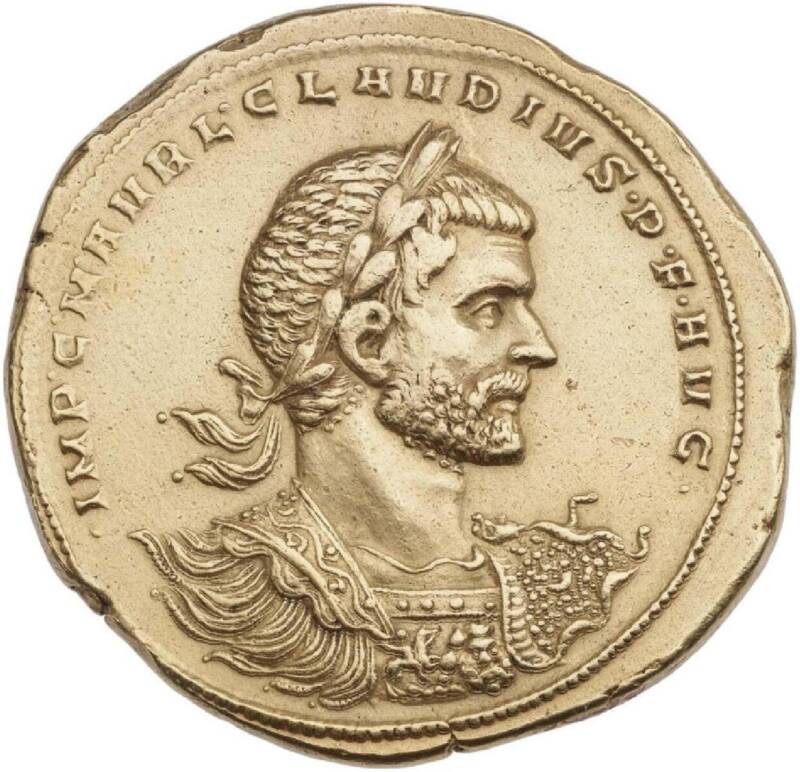
Wikimedia CommonsA Roman coin depicting Emperor Claudius II.
Originally, the Roman Senate declared Claudius II’s brother Quintillus as the next emperor of Rome. However, the army would not support Quintillus, and the troops quickly rallied around Aurelian instead.
Quintillus soon died, likely at the hands of the rebellious troops (though some sources claim he killed himself or was killed in a bloody battle with Aurelian). Not long after that, Aurelian was put into power in his place.
Why Emperor Aurelian’s Reign Was Largely Defined On The Battlefield
By the time Aurelian took power, the Roman Empire had fractured into three parts. There was the Gallic Empire in the west, including modern-day France and Spain, and the Palmyrene Empire to the east (which controlled regions like Egypt). Then, there was another region composed of Italy, the Balkans, and parts of North Africa that still recognized the Roman Empire.
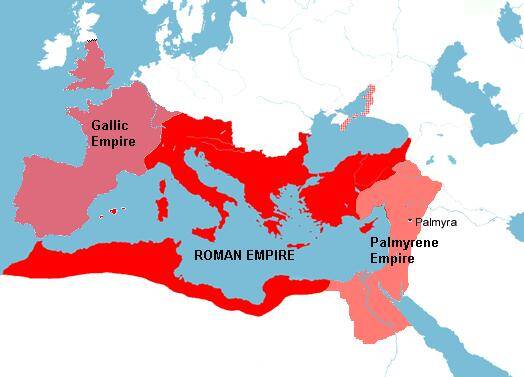
Wikimedia CommonsA map of the Roman Empire during 271 C.E.
There were also threats from Germanic groups, along with internal revolts within the Roman Empire that Aurelian had to manage. After battling invaders in Italy, Aurelian turned his attention to the Palmyrene Empire.
Edward Gibbon states in the History of the Decline and Fall of the Roman Empire that Aurelian faced key battles against Queen Zenobia of Palmyra’s troops. It was crucial that Aurelian take back the territories of the Palmyrene Empire, as they were productive and valuable for the Romans.
So Aurelian and his soldiers made their way east. Around 272, Aurelian began his military efforts to take back Asia Minor, or modern-day Turkey, while a general and an army of troops successfully took back Egypt.
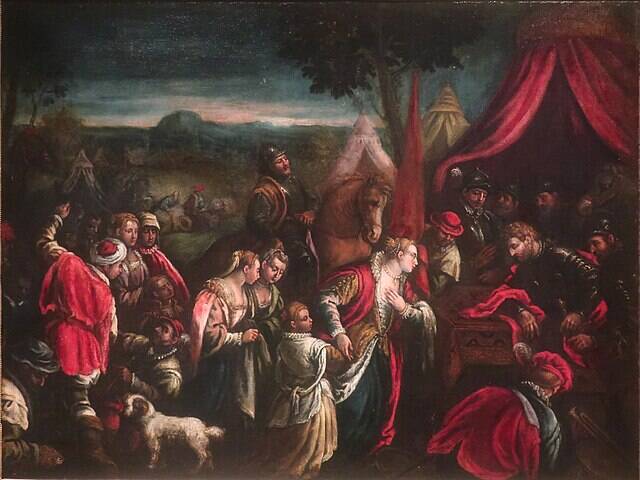
Wikimedia CommonsA painting of Queen Zenobia in the tent of Emperor Aurelian.
The Palmyrene Empire soon fell, as Aurelian saw success after success in his battles against Palmyrene troops. In the end, it took Aurelian less than six months to take back the Palmyrene Empire, placing it under Roman control once again. After the east had been secured for the Roman Empire, Aurelian moved west with his sights set on the Gallic Empire.
At this point, the Gallic Empire was having difficulties of its own due to outside invaders and internal conflicts. The Gallic emperor Tetricus began secretly communicating with Aurelian, planning to desert to him. In 274, Aurelian launched an attack on Tetricus’ leader-less troops at the Battle of Châlons, which ended in a clear victory for Aurelian and his men.
Restoring The World Needed Actions Beyond Winning Wars
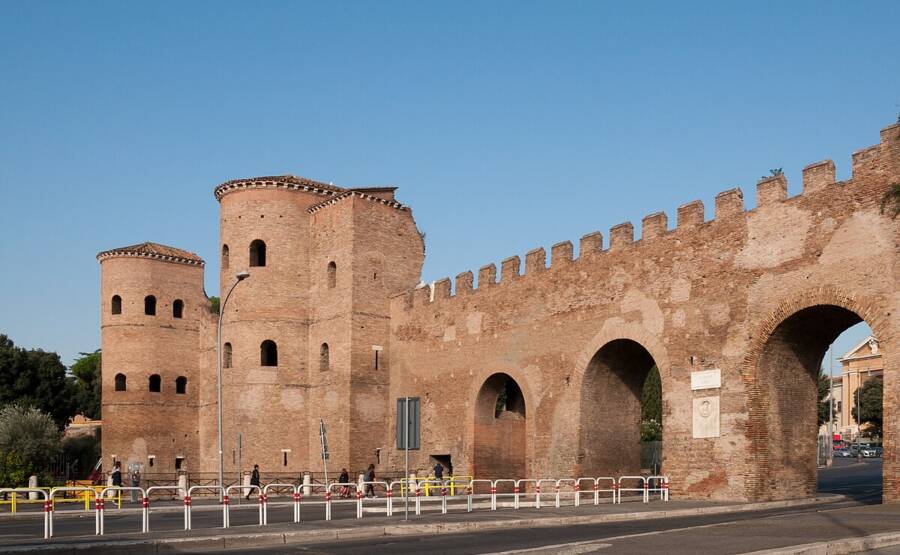
Wikimedia CommonsThe Aurelian Walls made up Rome’s main perimeter until the 19th century, and they still stand mostly intact today.
While it may have been his skills on the battlefield that cemented his nickname as “Restorer of the World,” Aurelian had accomplishments that went beyond warfare. During his time as emperor, he had ordered walls to be built surrounding Rome. Originally constructed with tufa concrete and triangular bricks and standing 12.5 miles long and 24 feet high, these walls were meant to help fortify the city, protecting it from outside attacks.
Work began on the walls in 271 and was not completed until the following emperor came into power, Probus. Known as the Aurelian Walls, they replaced the older Servian Walls, offering better protection from invaders.
Already impressive in their original form, the Aurelian Walls were restored, raised, and improved numerous times over the centuries.
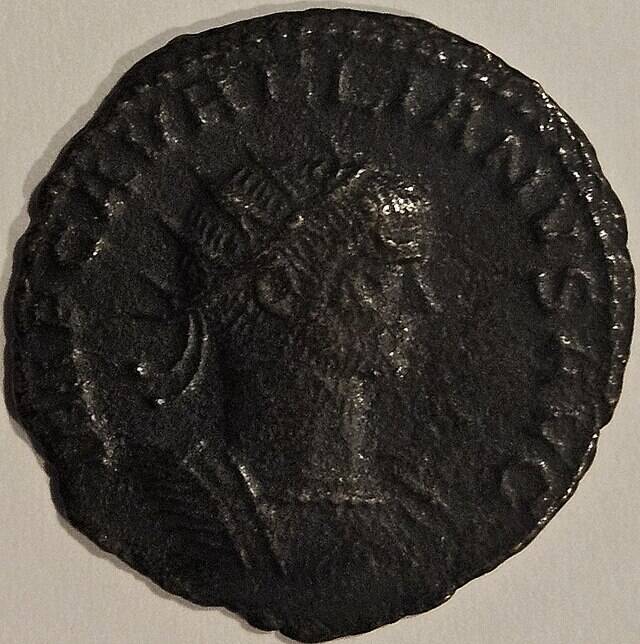
Wikimedia CommonsAn ancient Roman coin depicting Emperor Aurelian.
While the walls are just one infrastructure project that Aurelian started in his time as emperor (he also worked on other projects to relocate the empire’s mints so that money would reach soldiers near the frontier faster), the walls are undoubtedly one of the most lasting parts of the ruler’s legacy.
Was Emperor Aurelian’s Murder An Unfortunate Misunderstanding?
It was not rare, especially during the Crisis of the Third Century, for Roman emperors to be assassinated. However, Aurelian’s story is a bit different, as his murder at the hands of his own troops seemed to come out of nowhere.
Unlike the unpopular Quintillus, who was likely assassinated in favor of installing a different ruler, Aurelian’s sudden murder at the hands of his soldiers is probably more of an instance of bad luck.
In 275, Aurelian was on his way to fight the Persians — which could’ve hypothetically cemented another historic victory for him — when his soldiers suddenly felt that they needed to take down their leader.
It is believed that the soldiers were somehow misled into thinking that they were marked for execution, leading them to kill Aurelian in order to save themselves. One allegation states that the emperor’s secretary spread the false rumor so that he would be spared from a planned punishment. No matter the true reason for his soldiers’ mutiny, they succeeded in killing him.
Aurelian’s legacy goes beyond war and conquest. He built the walls that still surround Rome today and made efforts to change the minting process in the empire for financial reform. He may have even inadvertently helped pave the way for modern-day Christianity, as he introduced an invincible solar god called Sol Invictus — whose birthday was said to be December 25th, the same day that modern Christians celebrate the birth of Jesus Christ.
While not as famous as the “Five Good Emperors” who once controlled the Roman Empire or as flashy as other Roman rulers like the dictator Julius Caesar, Aurelian’s successes on and off the battlefield helped to ensure that the Roman Empire would survive through the Crisis of the Third Century.
Next, read about the worst emperors to ever rule Rome and the most fearsome stories of ancient Roman gladiators.
